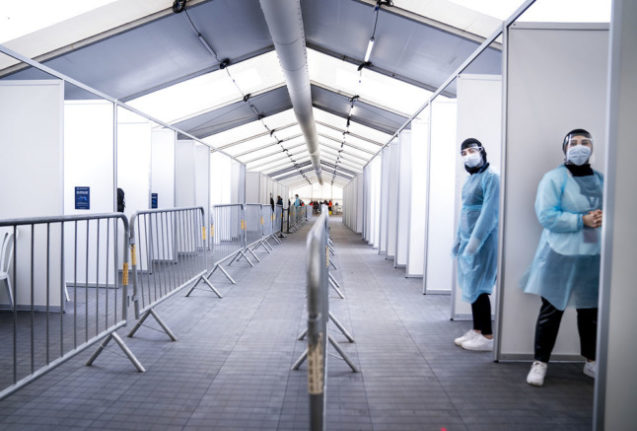National agency State Serum Institute’s daily update shows 51,033 new cases on Thursday, of which 3,119 are in people who have previously tested positive for Covid-19.
The test positivity rate was 21.86 percent, with 233,419 PCR tests having been administered.
Infection rates are particularly high amongst children and young people, according to SSI.
In 12-15 year-olds, the incidence last week reached 11,194 cases per 100,000 people. That compares with an overall national incidence of 4,572 per 100,000 residents.
Hospitals in Denmark have 955 inpatients with Covid-19 on Thursday, 17 more than the previous day. However, that number includes a large number of patients who have tested positive for the virus but are receiving hospital treatment for other reasons.
Although the number of patients with Covid-19 in hospitals now matches the figure from the peak of last year’s winter Covid-19 wave, hospitals are not strained and would be able to cope if the number increases, Kasper Karmark Iversen, senior medical consultant and professor at the University of Copenhagen and Herlev-Gentofte Hospital, told news wire Ritzau.
“The hospitals are ready. We are not severely strained by inpatients with Omicron. And we also think that people will not get severely ill if they are hospitalised with Omicron,” Iversen said.
“Of course we have a few (patients) who are admitted for all sorts of other reasons who have Omicron and must be isolated. And we also have staff (who are sick). And that’s what puts us under a bit of strain,” he said.
Prime Minister Mette Frederiksen yesterday announced the end of domestic Covid-19 restrictions and the categorisation of Covid-19 as a critical threat to society from next week.
That will cause a further increase in the number of hospital patients with the virus, Iversen said.
“But we have also come far in relation to some kind of community immunity, which itself will mean that the curve begins to flatten before terribly long,” he said.
“I think it will turn within the next two weeks, until then we can expect an increase which will probably slow down,” he said.
There are currently 37 Covid-19 patients in Denmark admitted to intensive care units. 22 of them are receiving ventilator treatment.



 Please whitelist us to continue reading.
Please whitelist us to continue reading.
Member comments